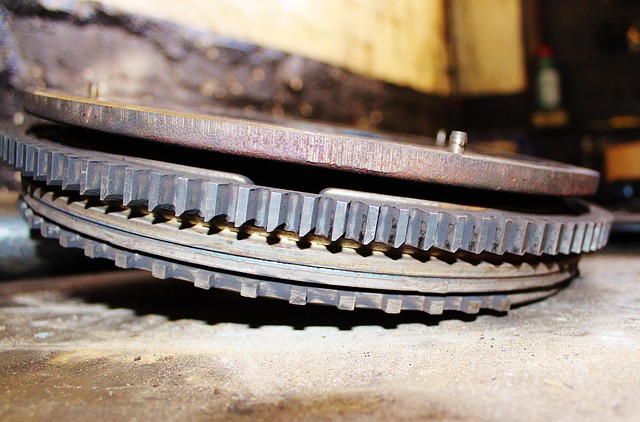
Tension in Modern Server Hardware
In the world of high‑performance computing, the term *tension* is not just a metaphor; it is a tangible force that shapes the design of every server component. From the relentless pace of processor development to the delicate balance between performance and power consumption, tension manifests itself as the constant struggle to reconcile seemingly contradictory requirements. Understanding this tension is key to appreciating why modern data centers look the way they do, and how the industry is evolving to meet the demands of an increasingly digital society.
The CPU Conundrum: Speed vs. Heat
Central processing units (CPUs) have been the beating heart of servers for decades. Each new generation pushes the limits of clock speed, core count, and architectural complexity. Yet these advancements create an inherent tension: higher performance generates more heat, which in turn requires more robust cooling solutions. The industry has responded with a spectrum of cooling strategies, from air‑based racks to liquid immersion, but each approach introduces its own set of trade‑offs.
- Air Cooling: The simplest and most common method, but it struggles to dissipate heat from densely packed, high‑frequency CPUs.
- Liquid Cooling: Offers superior heat removal but adds cost, complexity, and potential failure points.
- Thermal‑Interface Materials: Advanced compounds can improve heat transfer but may degrade over time.
Engineers must navigate this tension by optimizing thermal design power (TDP) while preserving the raw throughput required for modern workloads. The result is a continuous cycle of innovation, where cooling technologies evolve just as quickly as processor architectures.
Memory: The Power‑Efficiency Tug‑of‑War
Random access memory (RAM) has not escaped the tension that plagues CPUs. On one side, enterprises demand larger memory footprints to handle in‑memory databases, machine learning models, and real‑time analytics. On the other, memory modules consume significant power and produce heat, which further complicates cooling.
“The tension in memory design lies in delivering capacity and speed while keeping power draw within acceptable limits,” says a leading server architect.
Modern servers now incorporate a mix of high‑capacity DDR5 modules and low‑power LPDDR variants. The integration of memory buffers and non‑volatile memory express (NVMe) flash further alleviates pressure by offloading certain tasks from main memory, thereby smoothing the tension between capacity and efficiency.
Power Supply: The Constant Strain
Power supplies are often the unsung heroes of server design. They must convert mains voltage into the precise, stable power rails required by processors, memory, and peripheral devices. The tension here is twofold: deliver high wattage while maintaining high efficiency to reduce heat and operating costs.
- Efficiency Standards: Achieving 80 PLUS Platinum or Titanium certification reduces wasted energy but raises manufacturing costs.
- Modular Cabling: Enables precise power routing, minimizing cable clutter and airflow disruption, yet adds complexity to the chassis design.
- Redundancy: Dual power supplies increase reliability but double the power consumption unless intelligently managed.
To strike a balance, many data centers now employ smart power distribution units (PDUs) that monitor consumption in real time, allowing administrators to identify and address the sources of tension before they become systemic failures.
Architectural Tension: Scale vs. Agility
Scaling out a server cluster introduces its own set of tensions. Adding more nodes increases aggregate performance, but it also multiplies the complexity of network latency, data consistency, and fault tolerance. The shift toward hyper‑converged infrastructure attempts to mitigate this by integrating compute, storage, and networking onto a single platform. However, the trade‑off is a tighter coupling that can make individual components harder to upgrade or replace.
Cloud providers frequently experiment with serverless architectures to relieve the tension of scaling. By abstracting away the underlying hardware, they can allocate resources on demand, yet they must still contend with the physical limits of their data center’s cooling and power budgets.
Emerging Technologies: Alleviating the Tension
Several cutting‑edge solutions promise to reduce the tension inherent in server design. These include:
- Graphene Heat Spreaders: Offer unprecedented thermal conductivity, allowing CPUs to operate at higher frequencies without excessive cooling.
- Solid‑State Drives (SSDs) with Built‑In Cooling: Incorporate micro‑fans or heat sinks directly on the flash controller, reducing the load on server air‑flows.
- AI‑Driven Thermal Management: Predictive models adjust fan speeds and airflow in real time based on workload patterns, smoothing the tension between performance and heat.
While these technologies are still maturing, early adopters report significant reductions in both temperature peaks and energy consumption, indicating a promising path forward for the industry.
The Human Factor: Operators and the Tension Landscape
Beyond hardware, the tension in server environments also manifests in the day‑to‑day work of data center operators. Maintaining uptime requires a delicate balance between rapid response times and meticulous planning. The increasing automation of monitoring tools has eased some of the human burden, but the complexity of modern hardware still demands expertise.
As organizations move toward hybrid cloud deployments, operators must juggle on‑premise and remote resources, each with distinct performance profiles and maintenance schedules. The tension between local control and global scalability continues to shape the evolution of server management practices.
Looking Forward: The New Tension Paradigm
Looking ahead, the tension that defines server hardware will evolve alongside emerging computational paradigms. Quantum processors, neuromorphic chips, and edge‑AI accelerators each introduce unique constraints—power, heat, latency—that will require novel mitigation strategies. The industry’s response will likely involve a hybrid approach: combining traditional silicon with next‑generation materials, intelligent thermal systems, and flexible software layers that can dynamically reallocate workloads.
In this future landscape, the ability to identify and address tension early will become a decisive competitive advantage. Companies that invest in predictive analytics, adaptive cooling, and modular power solutions will be better positioned to navigate the inevitable friction points that arise when pushing the boundaries of performance.
In conclusion, tension is an inherent, unavoidable aspect of modern server hardware. Whether it arises from the relentless push for faster CPUs, the need for more memory, the constraints of power supply, or the complexities of scaling infrastructure, it forces designers, operators, and enterprises to make hard choices. By recognizing these tensions and developing innovative solutions to mitigate them, the industry can continue to deliver ever more powerful, efficient, and reliable computing resources to meet the demands of our digital age.



